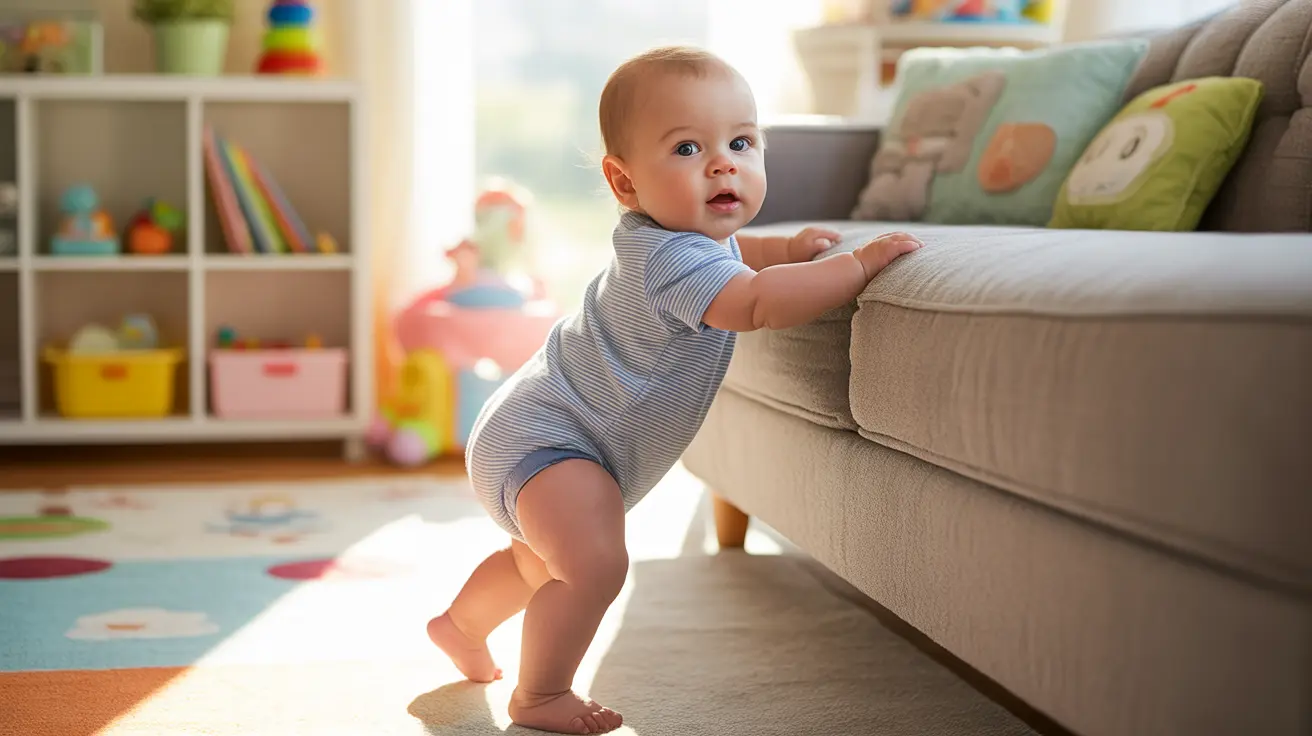As your baby grows and develops, one of the most exciting milestones to look forward to is their first steps. Understanding the signs that indicate your baby is preparing to walk can help you provide appropriate support and ensure a safe environment for this important developmental stage.
While every child develops at their own pace, there are several clear indicators that your little one is getting closer to taking those memorable first steps. Let's explore these signs and learn how to support your baby's journey toward walking.
Key Developmental Signs Before Walking
Before your baby takes their first independent steps, they'll typically display several important developmental markers:
Strong Head and Neck Control
The foundation for walking begins with proper head and neck control. Your baby should be able to hold their head steady and look around confidently while sitting or being held.
Sitting Independently
A crucial precursor to walking is the ability to sit without support. This skill usually develops between 4-7 months and demonstrates core strength and balance.
Crawling and Scooting
Most babies begin crawling or finding ways to move around between 6-10 months. This mobility helps strengthen the muscles needed for walking.
Advanced Pre-Walking Stages
Pulling Up to Stand
When your baby starts pulling themselves up on furniture or other stable objects, usually between 9-13 months, it's a clear sign they're preparing to walk. This action builds leg strength and helps them understand balance.
Cruising Along Furniture
After mastering pulling up, babies typically begin "cruising" - walking while holding onto furniture for support. This stage helps them gain confidence and practice coordinating their movements.
Creating a Safe Environment
As your baby shows signs of preparing to walk, it's essential to create a safe space for exploration:
- Remove unstable furniture and objects
- Install corner guards on sharp edges
- Secure loose rugs and electrical cords
- Place safety gates at stairs
- Keep floors clean and clear of small objects
Supporting Your Baby's Walking Journey
Appropriate Footwear
When your baby is learning to walk, barefoot practice on safe surfaces is often best. This allows them to develop foot strength and better balance. For outdoor protection, choose flexible, lightweight shoes with non-slip soles.
Physical Support
While it's tempting to hold your baby's hands constantly as they learn to walk, allow them plenty of opportunities to practice independently. This helps develop their natural balance and confidence.
Frequently Asked Questions
What are the common signs that a baby is ready to walk soon?
The main signs include pulling up to stand, cruising along furniture, improved balance while standing, and attempting to take steps while holding onto support. Strong crawling skills and the ability to get into a standing position independently are also important indicators.
At what age do most babies start pulling up to stand and cruising?
Most babies begin pulling up to stand between 9-13 months and start cruising shortly after, typically between 9-13 months. However, every baby develops at their own pace, and this timeline can vary significantly.
How can I encourage my baby to take their first steps safely?
Create a safe environment, provide opportunities for practice, offer praise and encouragement, and avoid using walkers. Allow your baby to practice barefoot when safe, and ensure they have plenty of stable furniture to cruise along.
Is it normal for some babies to walk later than 18 months?
Yes, it can be normal for some babies to walk later than 18 months. Every child develops at their own pace, and factors like personality, body weight, and opportunity for practice can influence when a baby starts walking.
When should I be concerned and talk to a pediatrician about my baby's walking development?
Consult your pediatrician if your baby isn't pulling up to stand by 12 months, showing no interest in mobility by 14 months, or not walking by 18 months. Also seek medical advice if you notice asymmetry in movement or regression in physical skills.




